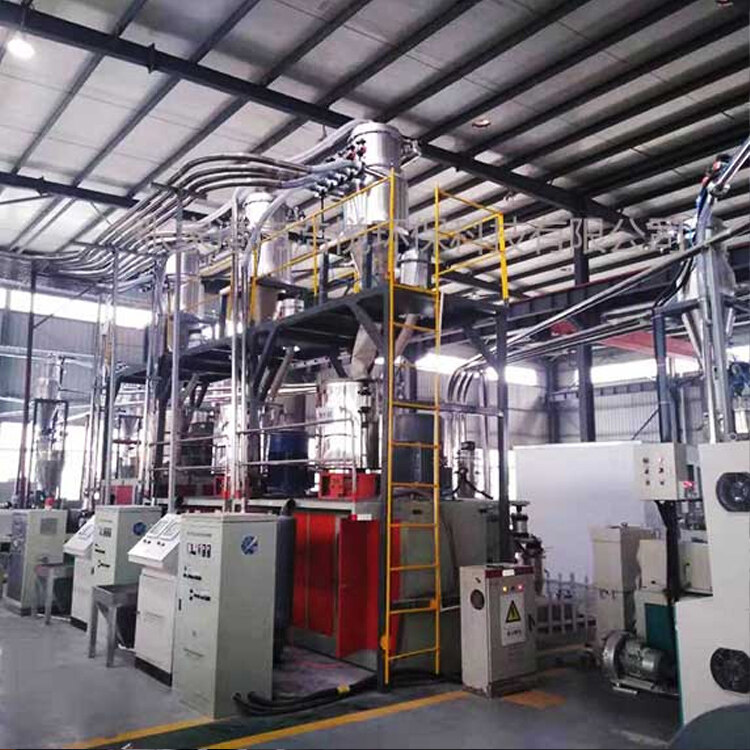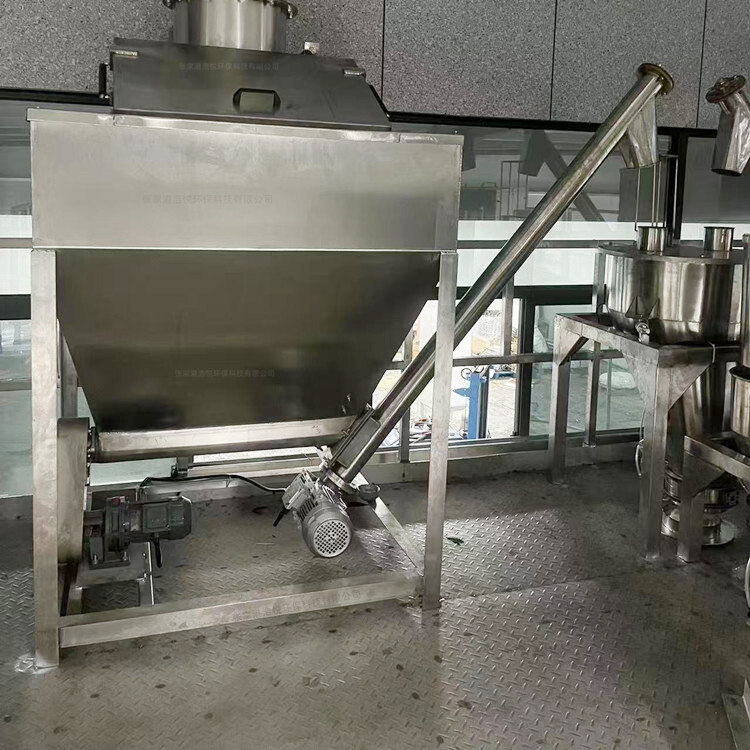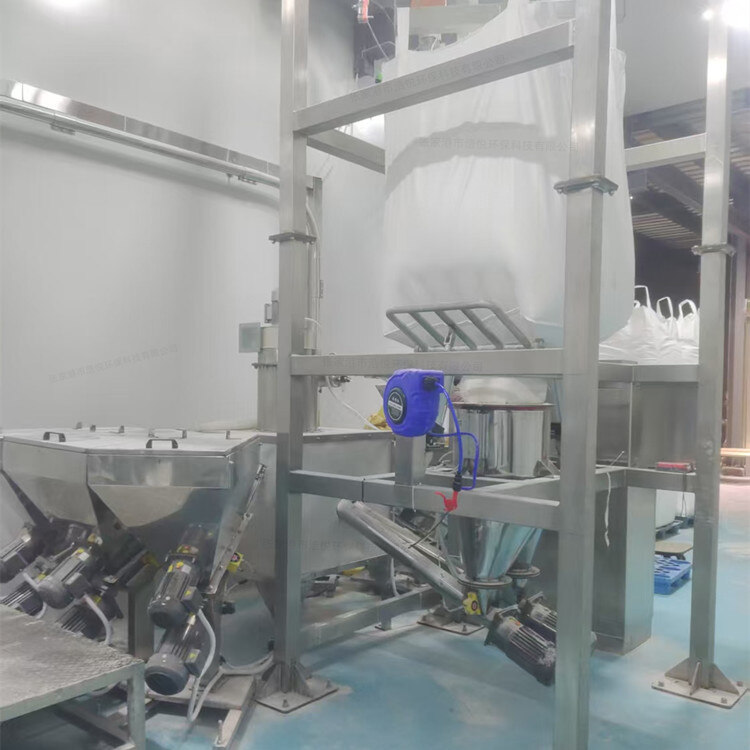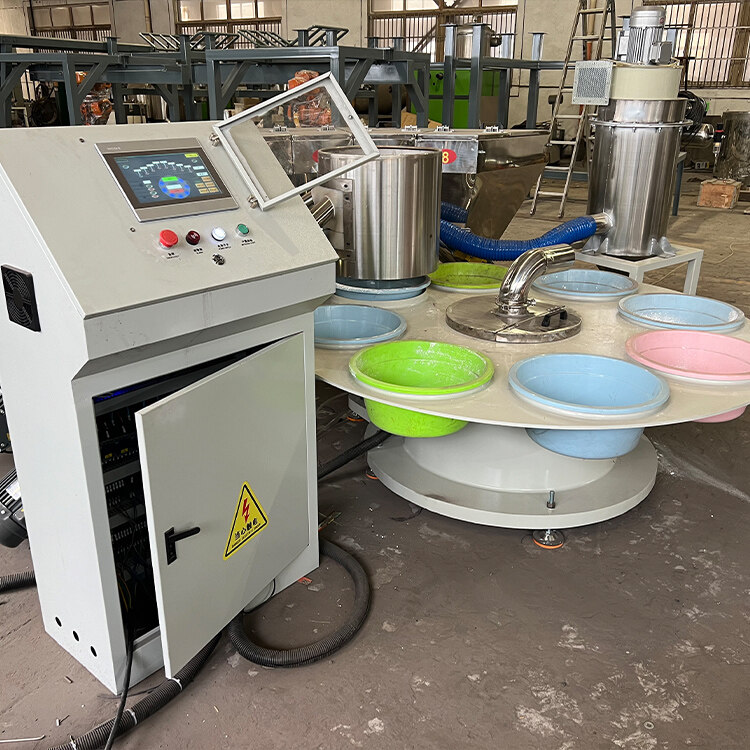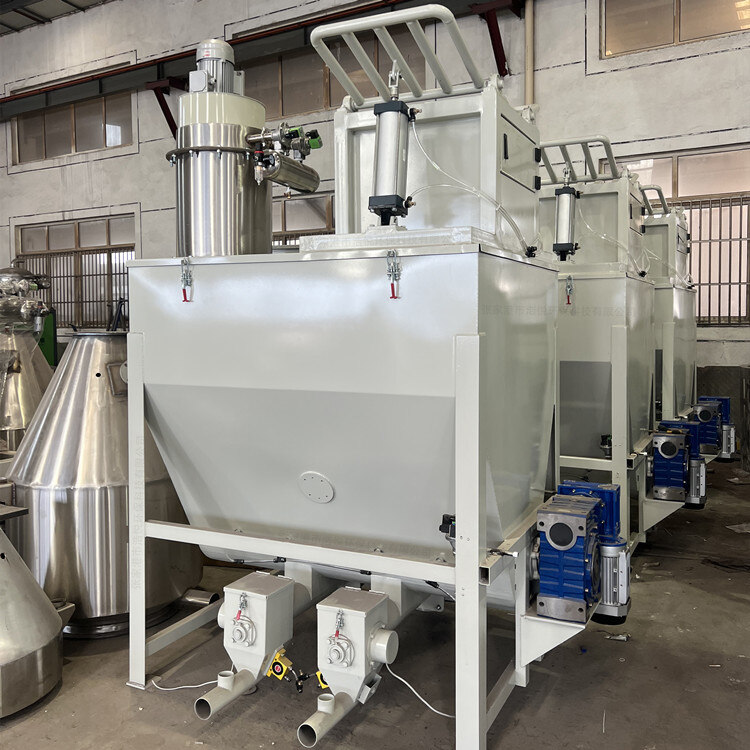- Introduction to automatic batching machine and fully automatic batching machine equipment
- The powder metering system tells you about the introduction of the mixing and drying machine
- 1000kg vacuum feeding machine
- Fully automatic small material batching system
- Research on Innovation of Automatic Weighing Machine Technology
- Design and operation of automatic batching system using PLC, industrial computer and frequency converter
Vacuum metering and conveying system
- Category:Automatic metering and conveying equipment
- Hits:110次
- Release Date:2025-06-27
- Share:
- Inquiry
- Details
In modern industrial production, vacuum metering and conveying systems have become the preferred solution for material handling in many industries due to their high efficiency, precision, and cleanliness. This system combines vacuum conveying technology with precise measurement functions to achieve full process automation of material picking, conveying, and measurement. It is widely used in fields such as chemical, pharmaceutical, food, and new energy, providing strong support for enterprises to improve production efficiency and ensure product quality.
1、 Basic principles of vacuum metering and conveying system
The vacuum metering and conveying system is constructed based on the principle of vacuum negative pressure and precise metering technology. The core operating logic is to create a negative pressure environment in a closed pipeline through a vacuum pump, and to use the atmospheric pressure difference to suck materials into the pipeline and transport them; At the same time, high-precision measuring devices are used to measure and control the material flow or weight in real-time during the conveying process, ensuring that the material is accurately conveyed to the target position according to the set parameters.
Specifically, after the system is started, the vacuum pump begins to pump air, causing the pressure inside the pipeline and storage device to rapidly decrease. The external atmospheric pressure pushes the material into the suction port, mixes with the airflow to form a gas-solid two-phase flow, and is transported to the designated location inside the pipeline. During this process, measuring devices (such as mass flow meters, weighing sensors, etc.) continuously monitor the physical parameters of the material and provide feedback to the control system. The control system adjusts parameters such as the pumping rate of the vacuum pump and the airflow velocity of the conveying pipeline in real time according to the preset measurement target, achieving accurate measurement and stable conveying of materials.
2、 The core structure composition of the system
(1) Vacuum generation and conveying unit
Vacuum pump: As the power source of the system, common types include rotary vane vacuum pump, water ring vacuum pump, and Roots vacuum pump. Rotary vane vacuum pumps are suitable for scenarios that require high vacuum levels and dry materials, and can generate vacuum levels above -90kPa; Water ring vacuum pumps have good moisture resistance and are suitable for transporting materials containing small amounts of moisture; Roots vacuum pumps are commonly used in high flow, medium to high vacuum conditions and are often combined with other vacuum pumps.
Conveyor pipeline: Made of stainless steel or wear-resistant plastic material, different inner wall treatment processes (such as mirror polishing, PTFE coating) are selected according to the material characteristics to prevent material adhesion and pipeline wear. The pipeline layout is flexible and can achieve various forms of transportation such as horizontal, vertical, and curved, meeting the layout requirements of different production workshops.
Suction and discharge device: The suction port is designed with a special flow guide structure to ensure smooth suction of materials; Unloading devices usually use pneumatic butterfly valves, flap valves, etc., to precisely control the discharge of materials through a control system.
(2) Measurement unit
Mass flow meter: Based on the principle of Coriolis force, it directly measures the mass flow rate of materials, without being affected by factors such as temperature, pressure, density, etc., with an accuracy of ± 0.1%. It is suitable for occasions that require extremely high measurement accuracy, such as the transportation of raw materials in the pharmaceutical industry.
Weighing measuring device: Real time monitoring of material weight changes through high-precision weighing sensors, combined with time parameters to calculate material flow rate. This method is commonly used for batch measurement and cumulative measurement, which can achieve precise control of material conveying volume, with an accuracy generally within ± 0.5%.
Volumetric measuring device: using the rotation of components such as rotors and screws, materials are transported and measured according to a fixed volume. It has a simple structure and easy maintenance, and is suitable for granular materials with good fluidity. However, the measurement accuracy is relatively low, generally within ± 1% - ± 2%.
(3) Control system
The control system is the "brain" of the vacuum metering and conveying system, usually composed of a programmable logic controller (PLC), an industrial computer (IPC), and a human-machine interface (HMI). PLC is responsible for collecting sensor data, executing control algorithms, and driving execution mechanisms; Industrial computers are used for complex data processing, recipe management, and system monitoring; HMI provides operators with an intuitive operating interface, realizing functions such as parameter setting, operation status display, and fault alarm. The system can also be connected to the factory's production management system (MES) through network interfaces to achieve real-time data transmission and sharing.
3、 Application advantages and typical scenarios of the system
(1) Core application advantages
High precision measurement: Advanced measurement technology ensures material conveying accuracy, meets the strict requirements of high-end manufacturing for material ratio, and effectively improves product quality stability.
Clean conveying: The fully enclosed conveying environment eliminates contact between materials and the outside world, preventing dust leakage and material pollution. It meets strict hygiene standards such as GMP and FDA, and is particularly suitable for industries such as pharmaceuticals and food.
Flexible and efficient: The conveying route and measurement parameters can be flexibly adjusted according to production needs, achieving simultaneous conveying and measurement of multiple materials; High degree of automation, reducing manual intervention, improving production efficiency, and reducing labor intensity.
Safe and reliable: The system is equipped with comprehensive safety protection devices, such as overload protection, abnormal vacuum alarm, blockage detection, etc., effectively avoiding equipment failures and production accidents; Meanwhile, the explosion-proof design can meet the transportation needs of flammable and explosive materials.
(2) Typical application scenarios
Pharmaceutical industry: In the process of drug production, it is used for precise measurement and transportation of raw materials and excipients to ensure the accuracy and consistency of drug ingredients. For example, on the tablet production line, the vacuum metering and conveying system accurately delivers various materials according to the formula to the mixing equipment, avoiding cross contamination and ensuring drug quality and safety.
Food industry: suitable for the production of milk powder, seasonings, candies and other food products, achieving precise measurement and clean transportation of raw materials, preventing the mixing of foreign objects and dust flying, and meeting food hygiene requirements. In the chocolate production line, the system precisely controls the transportation volume of cocoa powder, sugar and other raw materials to ensure the stability of product taste.
Chemical industry: used for conveying and measuring various chemicals and powder materials in the fields of fine chemicals, new energy materials, etc. For example, in the production process of lithium batteries, the vacuum metering and conveying system accurately delivers positive electrode materials, negative electrode materials, etc. to the mixing equipment in proportion, ensuring the consistency and stability of battery performance.
4、 Development Trends and Future Prospects
With the continuous development of industrial automation and intelligent manufacturing, vacuum metering and conveying systems are evolving towards intelligence, integration, and energy conservation. In the future, the system will integrate more sensors and intelligent algorithms to achieve fault prediction, automatic calibration, and adaptive control; By deeply integrating with IoT technology, remote monitoring and management of devices can be achieved; At the same time, the use of new energy-saving materials and optimized system design reduces energy consumption and operating costs, providing more efficient and green material handling solutions for industrial production.


